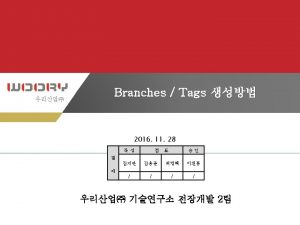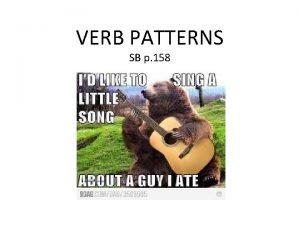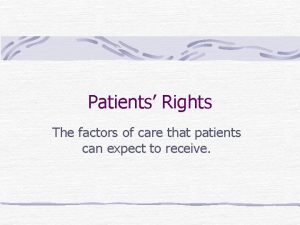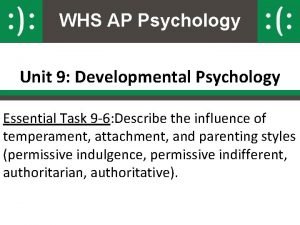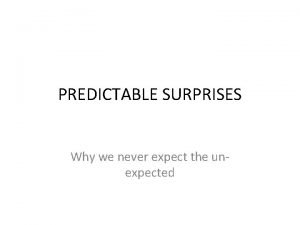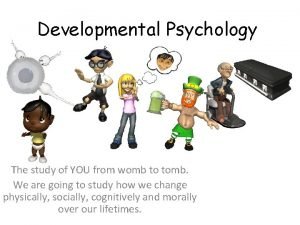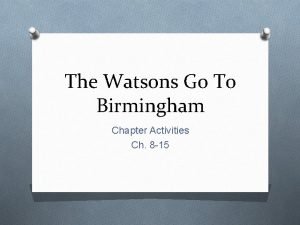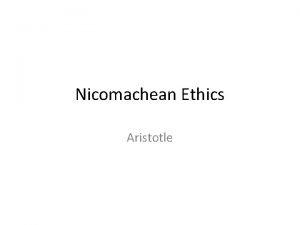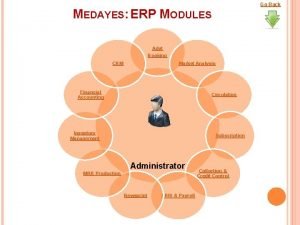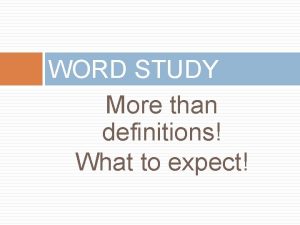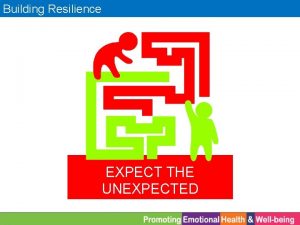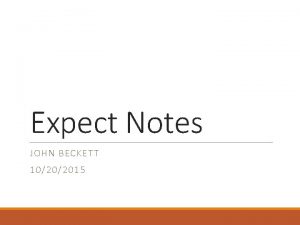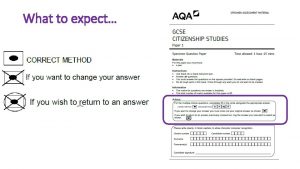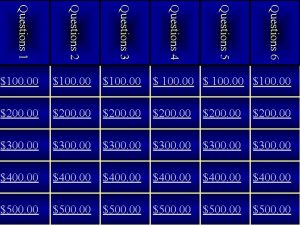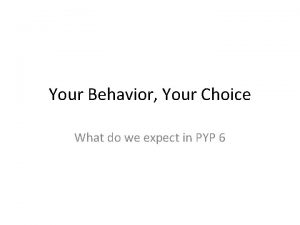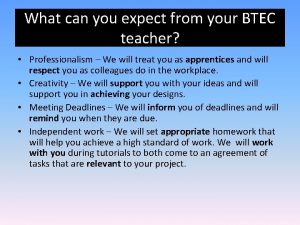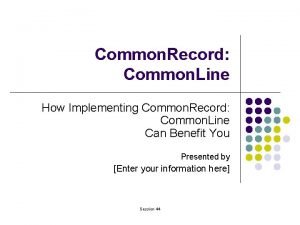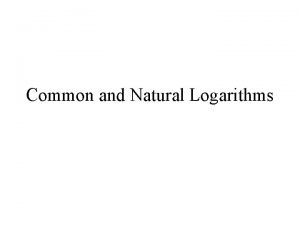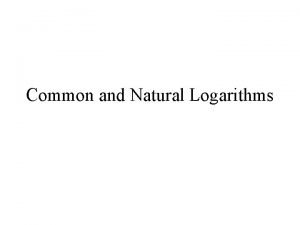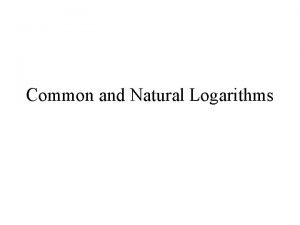Common Questions What do you expect your students























- Slides: 23


Common Questions • What do you expect your student’s brain to do? • Does brain research have a connection to teaching in today’s classroom? • Can brain research add “real” value to the curriculum program being offered at my school? 2

Clarity helps the following • Students become meta-cognitive and think about the learning process. • Students are more efficient in studying while building critical skills in attention. • Data driven responsibility for students: “I own my engagement in school!” 3

The Neuroscience e. Learning Revolution Three trends converging … Accelerating breakthroughs in NEUROSCIENCE DISSATISFACTIO N with e. Learning Increasing power of COMPUTING TECHNOLOGY approaches Neuroscience e. Learning Revolution 4

Breakthroughs in Neuroscience “We have learned more about the brain in the past five years than during all of human history combined. ” CHARLIE ROSE, talking with ERIC KANDEL, Nobel Laureate in Medicine, Columbia University View the Charlie Rose Brain Series at http: //www. charlierose. com/view/collection/10702 5

Exponential Growth in Computing Technology • Breakthrough methodologies in neuroscience are only possible due to parallel advances in computing capacity and software tools and algorithms • Millisecond timing analysis • Millimeter source localization • Advanced signal-processing and pattern-recognition algorithms 6

Brain. Waves “Raw” EEG: A Complex Mix of Signals Includes: • Millimeter source localization • Brainwaves with varying spatial and frequency characteristic • Artifacts (from eye movements, muscle tension, etc. ) • Artifacts must be removed prior to other analyses ~5 sec 7

Brain. Wave Analysis Frequency Domain Approach: Decomposition of EEG Components Delta Theta Frequency Domain Analysis Fourier analysis decomposes EEG signal into spectral components (signals of different characteristic frequencies) Alpha Beta Gamma 8

Nervanix Methodology: Q 4, 2015 Developing Scaled Scores & Norms 1 - 20 RECONSIDER OR JETTISON 21 - 50 REQUIRES MAJOR MESSAGE & EXECUTION MODIFICATIONS 80 - 100 51 - 80 SELECTIVELY FINE -TUNE ELEMENTS USE WITH NO MODIFICATION neurological score • All scores are on a normalized 100 point scale, +/- 2 is significant • Scores are based on the appropriate normative database for each platform and the category/genre All scores on a 100 point scale. +/- 2. 0 is significant 9

attention and 1. Measure engagement 3. Review “peaks and valleys” instructional 2. Presentcontent Track attention and 4. engagement over time 10

The Nervanix Headsets 11

Media in Nervanix Clarity 12

“It’s Like DVR for Studying” • Student clicks on sections of graph to replay “valleys” • Re-record attention data to help ensure comprehension 13

View and Track Results Over Time 14

Feasibility Study: Calcasieu Parish, Louisiana March 2015: Evaluated an e. Learning video solution using neuroscience to assess the perception and understanding for personalized learning. 2015 © Nervanix, LLC. All Rights Reserved. Confidential and Proprietary. 15

Study Stream: Comparing the Learning Object Format Understanding the instructional experience in the context of a specific learning object “Video/ Audio” Learning Object Evaluation Clarity Group 1 (Experimental) “Video/ Audio” Learning Object Evaluation No Clarity Group 2 (Control) Student assignment to group was randomized for each subject to minimize the effects of order bias/ 2015 © Nervanix, LLC. All Rights Reserved. Confidential and Proprietary. 16

Attention Adaptivity • Adapting instruction or assessment to the attention level of the learner • Applying re-engagement efforts when attention metrics wane • Optimizing learning by optimizing time on task After Before Efficacy Efficiency 2015 © Nervanix, LLC. All Rights Reserved. Confidential and Proprietary. 17

Results – Feasibility Study 5 4. 5 Quiz Performance 4 3. 5 3 Clarity 2. 5 Classroom 2 1. 5 1 0. 5 0 Medium Med High Student Performance Groups in Math 2015 © Nervanix, LLC. All Rights Reserved. Confidential and Proprietary. 18

Student Voices https: //youtu. be/3 hh. Qw 5 uc 9_Q 19

Educator Voices https: //youtu. be/6 BV 4 Kgnt 1 Fo 20

How Do We Evaluate Learning Objects? Traditional Tagging • Subject • Curriculum alignment • Modality More Recent Approach • Recommendation Engines • Student and Teacher Driven Rankings (voluntary and willful) • Big Data Elements (mouse clicks, keystrokes) Help Me Refine My Craft… Please! Revolutionary! • Average Engagement Scores • Average Attitude Scores (meta cognitively driven) • Formative refinement applied to content and pedagogy o Cut this, add that o New teachers who want to understand best practices that work FOR THEM! 21

Discussion/Questions Nervanix Clarity • Measures attention • Redirects learners back to specific content areas • Improves confidence and preparedness • Ranks, sorts and evaluates learning objects based on attention What applications do you see for use in schools? Other applications? 22

Contact Information Adam Hall CEO Adam. Hall@nervanix. com Steve Miller, Ph. D. Chief Science Officer Steve. Miller@nervanix. com 23
 Sqprs
Sqprs What do you expect to learn
What do you expect to learn You put your right hand in
You put your right hand in Thank you any question?
Thank you any question? You say you love rain
You say you love rain Rizal and his party went to pagsanjan for what reason?
Rizal and his party went to pagsanjan for what reason? Give us your hungry your tired your poor
Give us your hungry your tired your poor Work in paris answer the questions
Work in paris answer the questions Objectives work immersion
Objectives work immersion Finish verb pattern
Finish verb pattern Factors of care patients can expect
Factors of care patients can expect Reemployment
Reemployment Secure vs insecure attachment ap psychology
Secure vs insecure attachment ap psychology Never be predictable
Never be predictable Parents impose rules and expect obedience
Parents impose rules and expect obedience Parents impose rules and expect obedience
Parents impose rules and expect obedience Introduction to hospitality 7th edition
Introduction to hospitality 7th edition Alone together book
Alone together book The watsons go to birmingham chapter 8
The watsons go to birmingham chapter 8 Dont expect more
Dont expect more Expect the unexpected
Expect the unexpected Forget 3. hali
Forget 3. hali Expect tool
Expect tool Monolith etymology
Monolith etymology



